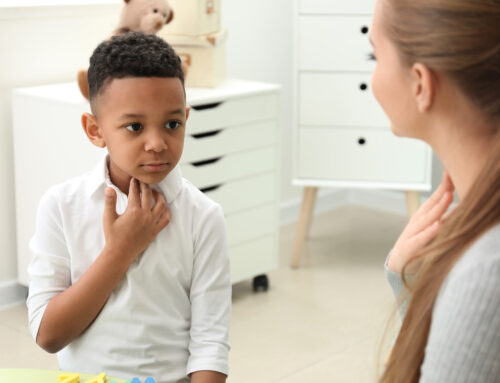What To Do About Bullying
November is Bullying Awareness month.
According to Prevnet, a Canadian organization committed to violence prevention, bullying is a serious issue that requires adult intervention. Bullying is a form of abuse that preys on vulnerability and can lead to social and mental health problems in children and youth. When carried into adulthood, bullying behaviour leads to a lifetime pattern of abuse that shows up in the workplace, family, and community.
While we cannot protect our children and youth from all of the social dynamics they will be exposed to in life, there are a number of things that we can do to support them to develop healthy relationships and social skills. Teaching our children how to recognize the various forms of bullying and how to respond helps them to stand up for themselves and for others, whether it is in person, or online.
What Parents Can Do To Help:
-
Value Inclusive and Respectful Behaviour Parents set the tone for family relationships and children learn relationship skills by watching their parents’ behaviour. Model the use of positive power by respecting and supporting others. Encourage positive relationships among children by praising respectful and inclusive behaviour whenever you see it. Try and focus on the positives of your child, even when they need correcting.
-
Talk About Bullying Often, kids may not feel comfortable reporting or talking about bullying because they may be embarrassed, scared, or worried that it may make the problem worse. Sometimes, kids get involved in bullying others as part of a social group, even though they know it is wrong. Have open conversations with your child about their experiences at school, online and in the community, talk about what they notice, and what role they play in their social groups. Talk about the negative consequences of bullying and why it is important to take a stand against this behaviour.
-
Teach Your Child To Be Assertive – Not Aggressive Being aggressive in response to other’s negative or aggressive behaviour usually makes things worse. Teach your child how to stand up for him/herself without being aggressive. Rehearse phrases, responses, and words such as, “STOP!” to help your child stand up for themselves. Practice assertive body language such as standing up tall, firm voice, and eye contact.
-
Teach Your Child How to Ask for Help Identify people in the school, community and family who are there to support your child in standing up for themselves and for others. Draw parallels to when adults may seek help in the workplace or community, so that children understand that we all need help at times to solve problems and feel safe.
-
Teach your Child the Difference Between Conflict and Bullying Help your child to understand that some conflict within relationships is normal and that we all have different perspectives and experiences. Distinguish between the behaviour that comes from working out our differences during a conflict, and bullying behaviour, which is for the purpose of hurting or humiliating someone. Teach and model ways to solve conflicts and problems without being hurtful to others.
-
Build On Your Children’s Strengths Children with low self esteem are often more likely to be bullied by their peers. Help build your child’s confidence in who they are as a unique and valuable individual. Find activities they enjoy that increase positive feelings about themselves and explore their strengths, interests, and identity. For children who engage in bullying behaviour, provide opportunities to use leadership skills in a positive way (e.g., teaching siblings and younger children a new skill, initiating including others in activities).
-
Be Aware of Social Dynamics with Peers Parents need to be aware of the dynamics within children’s peer groups, so that they can support positive friendships and monitor negative interactions. Consider enrolling your child in various activities in and out of school so they can experience many different friendships. Make connections with other parents so that children’s peer interactions can be monitored. Get to know your child’s friends, and how social power shows up in the peer group.
-
Collaborate with The School As schools are the places where children and youth gather, they are the spaces where bullying behaviour is most likely to occur. Talk with the school staff if you are concerned about your child and bullying so that you can work together to find solutions and build a support plan. Include your child’s voice and ideas in the communication and problem solving so that they are empowered to be part of the solutions.
-
When Things Go Wrong, Use Consequences That Teach and Encourage Empathy Consequences are more meaningful when they encourage personal responsibility, empathy, and learning. When your child engages in bullying behaviour, help them consider how they can make the situation right. Support your child to take responsibility for any harm they have caused and find other ways to respond in the relationship moving forward.
-
Reach Out for Support Children who are involved in bullying or being bullied can be more at risk of a number of social and emotional difficulties in their lives and relationships. If you are concerned about the impact of bullying dynamics and your child, consider reaching out to a professional who can assist you in determining next steps. Talking with school staff, your child’s coach, medical practitioner, and a counsellor are all strategies that could help support you and your child. Often, this can be a very emotional issue for parents to manage, especially if you were a victim of bullying or abuse. Know you are not alone in managing this problem and that there are people who can help you find solutions.
For more information, see www.prevnet.ca Canada’s Research Hub for Promoting Relationships and Eliminating Violence













 Sharon Walker, MSW, RSW
Sharon Walker, MSW, RSW Jordon Iorio Hons. BA, RSW
Jordon Iorio Hons. BA, RSW Christine Bibby, B.S.W., M.S.W., R.S.W.
Christine Bibby, B.S.W., M.S.W., R.S.W. Brianna Kerr, RSW
Brianna Kerr, RSW Danielle Vanderpost, RSW
Danielle Vanderpost, RSW Daniela Switzer, MA, C.PSYCH
Daniela Switzer, MA, C.PSYCH Tammy Adams
Tammy Adams Jade Bates, RMT
Jade Bates, RMT Caitlin Schneider
Caitlin Schneider Dr. Crysana Copland
Dr. Crysana Copland
 Amy Dougley
Amy Dougley Emily Green
Emily Green Bill Dungey, RSW
Bill Dungey, RSW



 Jessica Moore, RSW
Jessica Moore, RSW Abigail Wragge, RSW
Abigail Wragge, RSW